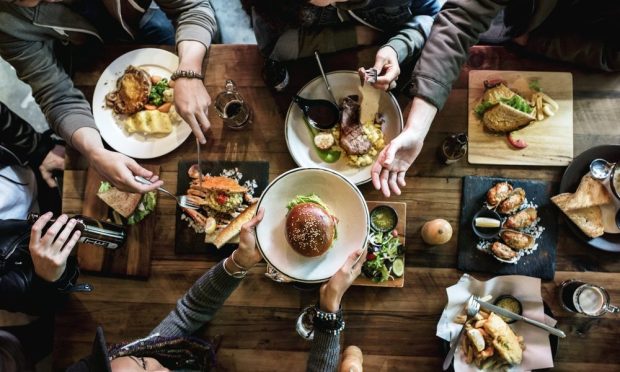Mobile Order-Ahead Faces Restaurant Hurdles — Here’s Why

It’s a relatively simple prospect: Select food. Order food. Eat and pay for the food (the process depends on the type of restaurant, of course). And then, perhaps, open a few notches on your belt to allow your newly full stomach to expand. (Happy Thanksgiving, by the way!)
But even as that basic concept remains in force — and will likely remain in force until pure energy is simply transferred seamlessly into computer-hybrid, not-quite-traditionally human bodies in one potential future — mobile technology is transforming the flow of payments and commerce in the restaurant industry. This about-to-expire year brought significant developments in mobile order-ahead tools, for instance, and deployments of new payment capabilities for diners, among other developments. And pretty much anyone who has the expertise is optimistic about 2019 bringing further progress on that mobile-restaurant front.
Still, big challenges remain. For an insider’s view of those potential hurdles — along with a general view on what might happen with mobile and the restaurant industry in the coming year — PYMNTS caught up with Tricia Phillips, senior vice president of product and strategy at Kount. Among the company’s recent pushes in the restaurant space is helping to craft fraud prevention defenses for mobile order-ahead technology that, arguably, has recently emerged as one of the hottest trends in mobile commerce.
Getting Past Hype
Trends, no matter how real, are always fueled by a fair amount of buzz and hype — the quick burning marketing tender of consumer culture — and that would seem to apply to mobile commerce and payments in the restaurant world, at least to an extent. Take the use of mobile apps to pay for orders at quick service restaurants (QSRs). According to one recent data point reported by PYMNTS, only a few — or 3.3 percent — of consumers use QSR-based mobile apps to pay for their orders.
Part of that is due to the culture, according to Phillips. People are just used to paying a certain way when it comes to fast food and quick service eateries, and it can take some time — and incentivizing — to change those habits, with at least three or so generations ingrained. In fact, one key might be “loyalty,” she said. On that, pizza restaurants are good guides, as they give customers opportunities to earn points toward free pizzas and other goods, another longstanding practice of U.S. food culture. “I am not sure how much this is happening in the QSR world,” she said, but there does seem to be opportunity.
No matter the sector or tool, though, the ongoing expansion of mobile commerce and payments in the restaurant world opens up opportunities for fraud. The keys to fighting back — admittedly more difficult, in general, for smaller operations than for the big chains with their IT staff and more expansive funding — is pretty much the same for what works in retail and payments. “You look at account takeovers, what devices people are using, how often and from where they are using apps, whether they are suddenly logging in from a different location,” Phillips said.
P2P Opportunity
The fraud opening could also grow as more restaurants adopt mobile payment features that enable peer-to-peer (P2P) funds transfers, an appealing prospect given how groups of people often dine together and then face the headache and friction of dividing up the check. In fact, one restaurant payment technology being deployed in these final months of 2018 enables customers not only to pay at their tables without the assistance of servers, but to split checks digitally via mobile P2P payment services.
Expect more such deployments. Phillips said one of the trends she expects to see grow in the coming year involves more such P2P services being introduced to the restaurant industry. And such payment services will combine with mobile ordering and mobile order-ahead services — perhaps a pal wants to buy her friend a coffee on the morning of her birthday — to produce a tight circle of payments and commerce.
But that could also produce what she called a “perfect circle of fraud” that would resemble the theft of gift cards, with smart criminals — and they are always getting smarter, and more organized — able to crack that circle and steal from consumers.
It’s not all bad news, though, when it comes to mobile and the retail sale of restaurants and beverages. Newer mobile commerce offerings might allow parents, for instance, to push their children’s allowances into, say, a Starbucks mobile account (or another such account should coffee be off limits).
Operational Challenges
All the mobile commerce and payments advances anticipated for 2019 for the restaurant space will require revised operational processes for many merchants.
For instance, what if a consumer arrives at a shop after placing a mobile order for coffee, only to find that coffee gone? “The people there are busy making orders,” Phillips said, which could make it challenging to get their prompt attention — to say nothing of the frustration that can result when one is denied caffeine in the morning. Retailers will “have to figure out to streamline the experience,” with some of them perhaps employing the use of mobile push notifications to make things more efficient.
Also key will be making mobile features, including mobile ordering as “intuitive” as possible. After all, no person wants to be that person in line who cannot figure out how a particular mobile tool works, Phillips pointed out.
The restaurant industry will continue to go mobile in 2019, further merging the digital and the physical — and the way those challenges are addressed seem likely to lead to more new mobile services, features and tools.
